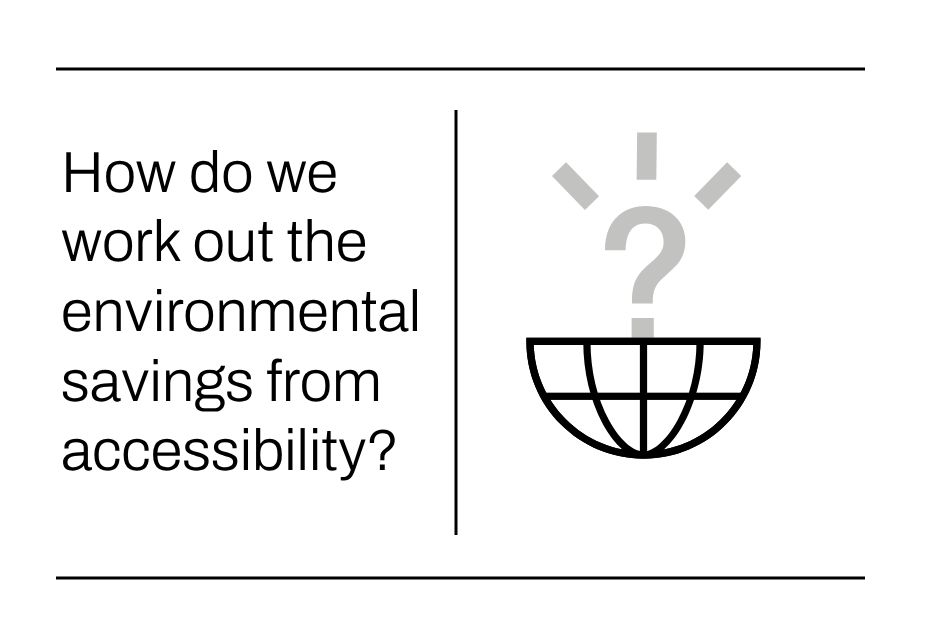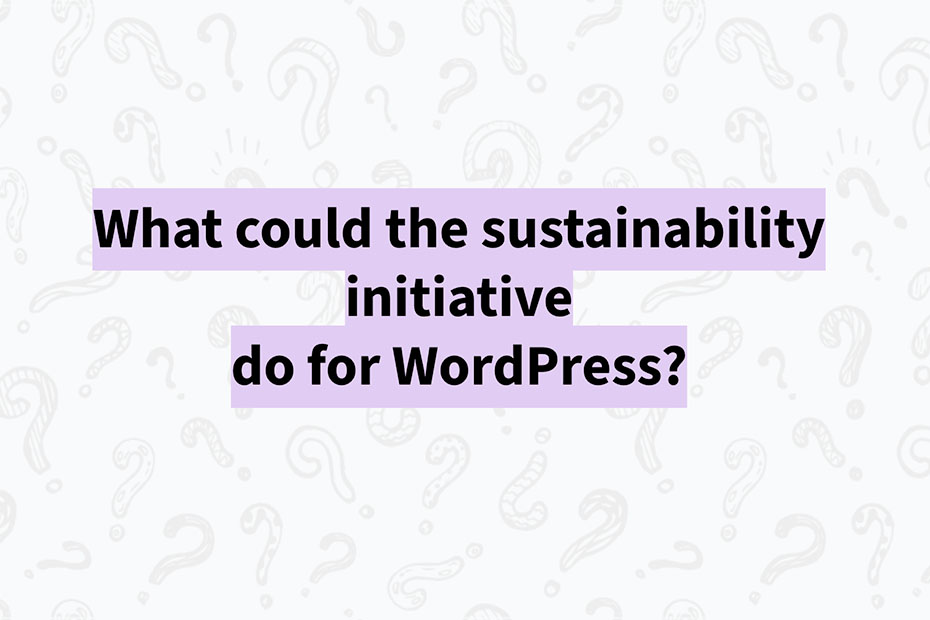Written and maintained by Fershad Irani and Hannah Smith
Part of our mission at Green Web Foundation is to empower digital teams and organisations to be part of the movement that creates a fossil free internet by 2030. An important enabler for this is having access to data which can be used to compare and assess the emissions arising from different digital activities.
We recommend reading the below sections to get more context, but if you’re in a hurry then jump straight to the data sources.
Purpose
Digital decarbonisation is an emerging topic with many varied organisations helping to mature this field through contributing research data and best practice. Due to this, we see that much useful data is dispersed around the web, making it difficult for people to find.
The purpose of this page is to bring these data sources together in one curated location which can be easily referenced.
In keeping with our ethos of open source and open data, we have linked to public resources which are not behind paywalls, do not require subscriptions to access, and/or are open about their methodology.
Audience
This page has been written for a technical audience, who are already familiar with the ideas, concepts, and methodologies for measuring digital emissions.
If you are keen to get a solid grounding around these concepts, drop us a line about training you or your organisation.
What this isn’t
This page is not aiming to provide detailed implementation instructions on how to use the data sources provided.
Additionally, we are limiting our scope to data. While we may include links to online calculators (which are great ways to get and understand data), this page will not include links to API, code libraries, or developer tools.
Other notes
Living document
This is a living document. We will be updating it periodically as we become aware of new data, or changing data.
You can be a part of helping others contribute to a fossil free by contributing other data sources that could be added to this list. See the end of the page for more on how to do this.
Differences in data
You may find that there are times when two data sources for the same thing show different emissions data. This is usually because different assumptions or contexts are used. For example the methodologies to produce the data were based on different research papers, measurement tools, or even geographic regions with different energy grid conditions.
Picking the right functional units
A functional unit is a quantifiable representation of a product or service’s key function. It is generally the indicator used when talking about how a product scales. Picking the right functional unit is important for ensuring that you’re using the right data when assessing the impact of a product/service.
For digital products, that might be reflected in requests, visits, downloads, or data transfer. If you’re looking at hardware then CPU cycles, memory utilisation, or hardware power consumption might be better candidates.
That’s where an easy to reference mental model comes in handy.
A simple way of thinking about functional units is – I want to measure how much CO2 per R.
R is the functional unit.
Let’s expand on that further. Say you want to start measuring the impact of a client-facing API. When you’re working out which functional unit to use, ask yourself “what unit do we use to talk about how this product scales?”. For an API, that’s probably going to be the number of requests made. So requests become the functional unit used throughout your assessment.
As you look for data, your guiding star will be “I want to measure how much CO2 per request”.
Digital emissions data sources
Below is a curated collection of public data sources for digital products, services, and activities.
We have grouped data sources into categories as best as possible. There might be some data sources that appear in more than one category. For each data source, we try to provide as much context and guidance as possible. This is to help you decide if that data source might be right for your needs.
Quick links
- Climate impact of digital – Impact CO2
- Datavizta manufacturer dataset
- ADEME – Assessment of the environmental impact of a set of refurbished products
Website carbon estimates
Calculating website carbon emissions is a common starting point. Luckily, there are some easy to use calculators which serve as great places to start.
Online calculators
Online website carbon calculators provide a quick way to start estimating the emissions associated with operating a website.
These help you measure is how much CO2 is emitted for each website page that is loaded (your functional unit).
Here are two popular online calculators tools, which both use the Sustainable Web Design model (described later):
What to know about website carbon calculators
- Most website carbon calculators look at the size of data transfer for a page and base calculations on that.
- Most website carbon calculators use the global average grid intensity (442g/kWh) when calculating the carbon emissions of a page.
- There is conjecture as to whether data transfer is the right functional unit for website emissions. This is because it doesn’t account for the impact the site might have on a user’s device, among other factors.
- The tools linked above only test a single web page.
- You may receive different emissions estimates when testing the same page on both calculators. We are working with Wholegrain Digital and MightyBytes to understand this discrepancy.
Sustainable Web Design
Wholegrain Digital, MightyBytes, EcoPing, Medina Works and The Green Web Foundation teamed up to release the Sustainable Web Design model. By open sourcing the methodology, people are able to implement it and adjust it to be more specific to their needs.
The Sustainable Web Design model uses data transfer as a proxy indicator for total resource usage. This number is used to extrapolate energy usage figures for a website. It does this by breaking the total system down into segments, each of which account for a portion of the energy use:
- the use-phase energy of datacentres serving content
- the use-phase energy network transfering the data
- the use-phase energy of user device an user is accessing content on
- the total embodied energy consumed to create all of the above
What to know about the Sustainable Web Design Model
- It forms the basis for most popular website carbon calculators.
- It is mostly based on research from 2020, but is regularly reviewed and updated.
- The formula includes assumptions about the percentage of new and returning visitors to a site. These can be adjusted if using the model for yourself.
- It applies broad system boundaries, which can result in overestimation of emissions.
Website hosting
Green Web Dataset
The Green Web dataset is a list of all the website domains running on green energy in our system along with which verified green hosting provider is hosting them. Every day, across the globe, around seven million checks are made against it using the Green Web Check API and Green Web Check tools.
The Green Web Dataset should be used when you want to check if a website host is a verified green hosting provider.
What to know about the Green Web Dataset
- To be a known green hosting provider, organisations need to go through a verification process with Green Web Foundation to prove their claims.
- The Green Web Dataset contains verified providers, and associated evidence to support their green claims.
- The dataset currently does not return carbon emissions for a known hosting provider.
- There are several reasons why a hosting provider may not be returned as green. They are captured in this FAQ.
Cloud services
With more and more compute shifting to the cloud, its becoming increasingly important for teams to be aware of the carbon emissions for their cloud-based workloads. Having visibility of data center emissions also allows teams to choose green regions during the planning phase of projects.
AWS and server lifecycle emissions
Datavizta cloud dataset | Datavizta server dataset
Boavizta has compiled two datasets which cover lifecycle emissions of Amazon Web Services (AWS), as well as individual servers. They are presented through the Datavizta app, which is an interactive frontend for accessing the underlying data.
The cloud dataset presents emissions per instance, while the server dataset presents a breakdown per server. These would be appropriate functional units to use when you’re using data from either of these datasets.
What to know about Datavizta
- Both datasets are extremely customisable, including being able to calculate emissions based on server location, and server load.
- Both datasets include manufacturing and usage data. Manufacturing data is further broken down by device components.
- Cloud dataset is limited to AWS instances.
- English and French versions of both tools are available.
Carbon Intensity of Data Centres
Carbon intensity of data centers website
This visualisation brings together CPU emission factor data from Cloud Carbon Footprint and Climatiq’s Open Emissions Factors DB. Since the data presented here is average annual emissions for a region, it would make sense to that as the functional unit in this case.
What to know about the Carbon Intensity of Data Centres
- The data for this visualisation appears to be from 2021. You can get updated data for individual regions in Climatiq’s Data Explorer (free account required).
Device production and use
Emissions associated with end-user devices make up a large portion of overall digital emissions. With most devices, the majority of emissions are accumulated during the production phase.
In a perfect world, manufacturers would be required to label products with this emissions data. Until legislation comes in to mandate that, there are multiple public datasets where you can find such information.
Please bear in mind that the functional unit used here would vary depending on what device type you are looking at.
Climate impact of digital
Climate Impact of Digital (French only)
Impact CO2 contains a general lifecycle emissions breakdown of many common devices found in both the home and the office. You can click through to any for more detailed figures, and to see how changing factors – like the useful life of a device – impacts the overall emissions footprint.
What to know about Impact CO2
- The underlying dataset is based on French data. To the best of our knowledge, the grid intensity used to calculate production/usage emissions is based on the French grid.
- The data contained shows emissions from both manufacturing and usage phases.
Datavizta manufacturer dataset
Boavizta’s manufacturer dataset contains full lifecycle emissions estimates for a huge number of devices covering multiple manufacturers such as Apple, Dell, Lenovo, HP, Lexmark, Samsung and Seagate.
Results can be filtered by manufacturer, device type, and usage category. Production and usage data is presented for each device. In most cases the useful life of the device, and the region it is used in can also be adjusted.
What to know about Datavizta
- The grid intensity data used to calculate usage emissions for different regions is mostly from 2020, so might not capture recent changes in a locations energy mix.
- The data contained shows emissions from both manufacturing and usage phases.
- You can find the raw data for this tool on Github.
- English and French versions of both tools are available.
ADEME – Assessment of the environmental impact of a set of refurbished products
Page 152 – 167 of the ADEME research report linked above gives some numbers for understanding the environmental impact of buying new vs refurbished devices. The data covers a range of device types and sub-categories.
- The figures provided here are averages, but do give a pretty solid indication of the differences between buying new versus refurbished across device types.
- You will need to provide an email address in order to download the report.
- To quickly jump to data about a specific device type, look at:
- Smartphones: Page 152
- Tablets: Page 157
- Laptops: Page 158
- Desktops: Page 162
- The report was published in 2022, so be mindful that you should consider the data indicative only.
Common digital activities
We find that people are often curious about the carbon impact of their day-to-day activities. While there are a lot of variables that go into calculating the carbon footprint of our digital activities, we’ve put together a few sources that should help you get started.
Sending an email
Impact Co2 email calculator (french only)
Impact CO2 contains a highly interactive tool which breaks down the emissions associated with sending email. You can customise a whole host of variables, from email composition time, read rate, reading time, network used, and more.
What to know about Impact CO2
- Only grid intensity data for France or the EU can be used when displaying emission results.
- The data contained shows emissions from both manufacturing and usage phases of the devices used to write/receive email as well as data centers.
Video calls
The Zoom Emissions calculator takes a few inputs about your video call usage, and returns an estimate of both weekly energy consumption and carbon emissions. While the name implies this tool is for Zoom users, it can serve as a starting point for those who use other video calling tools.
What to know about Zoom Emissions
- The grid intensity used to calculate carbon emissions is based on the UK’s energy grid in 2020.
- The underlying research used to estimate network energy usage for data transfer is from 2017.
- Parts of the calculation model rely on bandwidth data from Zoom. This may not be directly comparable to other video calling software.
Video streaming
IEA: The carbon footprint of streaming video website
This fact checking article from the IEA aims to provide clarity around some of the attention grabbing headlines on the carbon emissions of video streaming. The page includes a calculator which can be used to estimate the emissions of streaming video. Users can adjust bitrate, device, network, and location variables.
What to know about IEA: The carbon footprint of streaming video
- The page was last updated in 2020, so some data and research could be out of date.
General digital activities
This calculator brings together several digital professional activities to help users calculate their overall digital impact. It covers IT equipment, video calls, web browsing, cloud storage, emailing, and even includes a section for business travel.
Results show a breakdown of digital and travel related emissions, as well as a total annual figure. There are also comparisons provided for context.
What to know about ISIT: My Impact
- You can read about the different data sources and methodologies used for this calculator.
Carbon intensity
Carbon intensity is a way of measuring how clean electricity is, or more precisely how much CO2 is emitted by producing a unit of electricity.
CO2.js
CO2.js Github Repository | CO2.js Docs
CO2.js is an open-source JavaScript library that enables developers to estimate the emissions related to use of their apps, websites, and software. The library includes yearly average grid intensity data from Ember, as well as marginal intensity data from the UNFCCC (United Nations Framework Convention on Climate Change).
What to know about CO2.js
- It is actively maintained by us, The Green Web Foundation.
- The data sources currently available in CO2.js are historical, for the latest available year.
- It is open-source, and can be installed into a JavaScript project using NPM. Data can also be downloaded from Github.
- Both average and marginal intensity data is published under a Creative Commons Share Alike Attribution Licence (CC BY-SA 4.0). (What does this mean?)
Electricity Maps
Electricity Maps provides real-time and historical electricity data for more than 160 regions. Their dataset includes electricity production, consumption, as well as carbon intensity and pricing (where available). They do this by pulling together data from multiple publicly available APIs, consolidating them into a single dataset.
What to know about Electricity Maps
- The code and API parsers for the Electricity Maps App (Map view) is open-source and available on Github.
- The Electricity Maps App shows real-time data, as well as historical data for the last 24 hours.
- There is a paid API available if you need to programmatically access Electricity Maps data.
- CO2 Signal is a free API provided by also Electricity Maps. It delivers real-time grid intensity data only, and applies rate limits for usage.
General data sources
Climatiq
Climatiq’s data explorer brings together emissions data from multiple data sources around the world. This delivers a wealth of information across a wide range of industries, and business functions.
What to know about Climatiq
- A free account is required to search/filter in the data explorer.
- Use of the data for non-commercial purposes is permitted for free.
- There is a lot of data presented in Climatiq’s data explorer. This could feel overwhelming if you’re approaching this for the first time.
- When using data from Climatiq, be sure to check the functional unit and region that is used for emissions factors.
Our World in Data
Our World in Data’s mission is to publish the “research and data to make progress against the world’s largest problems”. The research publications on Our World in Data are dedicated to a large range of global problems in health, education, violence, political power, human rights, war, poverty, inequality, energy, hunger, and humanity’s impact on the environment.
What we know about Our World in Data
- Visualizations and text are licensed under CC BY that you may freely use for any purpose.
- Data is available for download.
- All code written by Our World in Data is open-sourced under the MIT license and can be found on GitHub.
- There is a lot of data available to review. It’s best to approach the site with a specific question you want to answer.
Subak Data Catalogue
Subak’s data catalogue is a curated portal of datasets that cover a wide variety of climate related categories. Each dataset is also given a “data freshness score” which gives an at a glance indication of how recently the dataset was last updated.
What to know about Subak Data Catalogue
- The data catalogue has a number of different filtering options available including organisation, format, country, and license.
- There are a lot of data sources listed. This could feel overwhelming if you’re approaching this for the first time.
- All data sources listed are individually licensed. You should be aware of any licensing terms before using a data source.
Found this useful?
Please tell others about this resource, and cite us in your work.
Think this could be improved?
As mentioned at the start, this is a living document. If you know of a data source that could be added to this list, please help us help the wider community and let us know about it. Use our support form. In your message to us, please provide a URL to the data source, as well as any other information you have on it.



